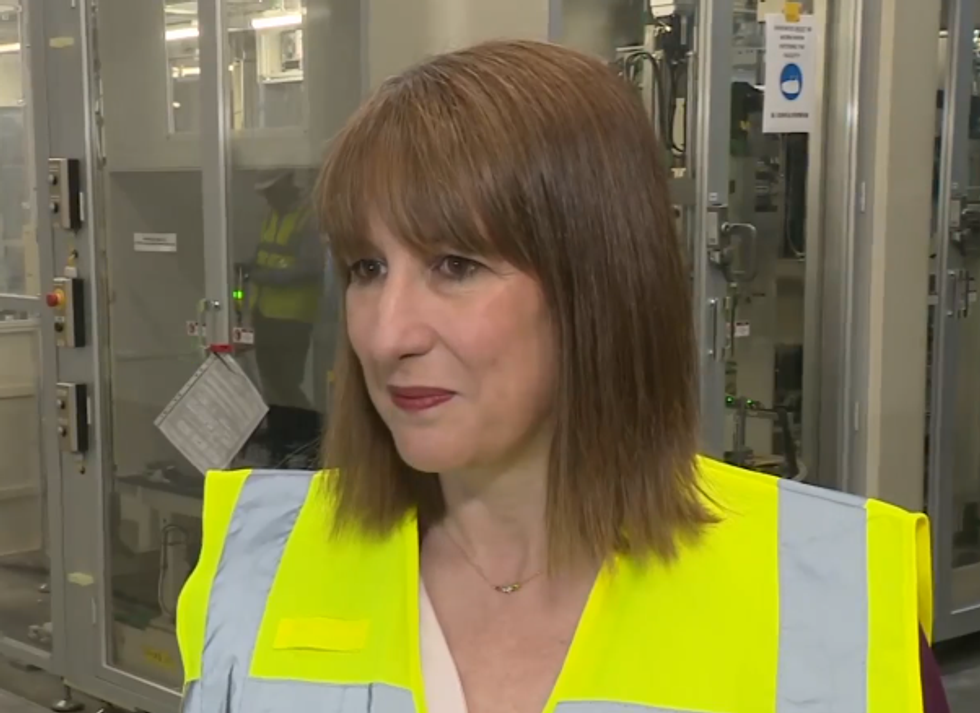UK Government launches new gilt paying 5.375% interest for 31 years - but what's the catch?

For those looking beyond cash, gilts could provide a solid middle ground
Don't Miss
Most Read
A new UK Government bond is up for grabs, offering investors a hefty 5.375 per cent annual return until 2056.
It might appear attractive amid falling savings rates and stock market uncertainty, but it won't suit every investor.
Investors are being given the opportunity to buy a UK Government bond, known as a gilt, offering the equivalent of 5.375 per cent interest every year for the next three decades.
At the end of that period, Britons will get back the face value of the bond and will have enjoyed "a steady stream of interest payments."
That reliability is a major selling point for cautious savers. The headline rate beats most current cash savings offers, and the rate is much higher than the current best-buy cash deals on the market for instant access and five-year fixed rate savings, experts have stated.
According to Dan Coatsworth, investment analyst at AJ Bell, the offer is "more generous than the 3.3 per cent prospective dividend yield on the FTSE 100."
What's the catch?
Gilt prices move with interest rates. If interest rates rise again, newer gilts might offer even higher returns. In that case, existing bonds like this one could lose value on the secondary market.

Investors are being given the opportunity to buy a UK government bond, known as a gilt, offering the equivalent of 5.375 per cent interest every year for the next three decades
| GETTYCoatsworth said: "This wouldn’t matter to anyone intending to hold a gilt until maturity. However, an investor would need to be prepared for movements up and down in the gilt during its lifespan in line with changing interest rate expectations."
Inflation is another concern. If inflation outpaces expectations, investors may demand higher yields, driving down existing gilt prices.
And although stocks might deliver higher long-term returns, Coatsworth warns: "Investing in stocks and shares comes with much higher risks than investing in gilts."
Retail investors can buy into the new issue through platforms like AJ Bell or Hargreaves Lansdown, but they’ll need to act quickly. Both platforms state applications close May 19, 2025.
Coatsworth said: "The first interest payment will be made on 31 July, 2025, and the gilt will mature on 31 January, 2056."
After the initial issue, the gilt will be tradable on the secondary market – but Coatsworth notes that "liquidity is unknown."
LATEST DEVELOPMENTS:

Retail investors can buy into the new issue through platforms like AJ Bell or Hargreaves Lansdown
| GETTYGilts have grown in popularity among retail investors in recent years, particularly those using DIY platforms like AJ Bell, as falling savings rates have boosted demand for fixed income alternatives. Coatsworth notes that this trend may shift as the Bank of England begins cutting rates.
Gilts have also appealed for their tax efficiency. As Coatsworth explains, they are "advantageous because you don’t pay any tax on capital gains", making them especially attractive to higher and additional rate taxpayers, who may benefit by purchasing below face value and holding to maturity.
What are gilts?
Gilts are UK Government bonds – effectively IOUs. Investors lend money to the Government in return for fixed interest payments, known as coupons, and the return of their original investment at maturity.
They are considered low-risk, though not without downsides. Inflation can erode real returns, and rising interest rates can push gilt prices down. However, investors who hold the gilt to maturity receive the full interest and capital, regardless of market movements.
Gilts are also popular with higher-rate taxpayers, as capital gains on gilts are exempt from tax.

The Treasury has launched a new gilt
| PoolCoupon vs yield – what’s the difference?
The coupon is the fixed annual interest rate, based on the bond’s face value – in this case, 5.375 per cent.
The yield reflects the actual return based on the gilt’s current market price. If the price rises above £100, the yield falls; if it drops below, the yield increases.
How to buy the new gilt
The 2056 gilt is being issued via a syndication, where all investors receive the same price, set by market demand.
Retail investors can apply through platforms such as AJ Bell, with a minimum investment of £1,000 and no dealing charge. The application window closes at 2.30pm on Monday, 19 May, ahead of the gilt’s first trading day on Wednesday, 21 May.
Governments issue bonds to raise funds, and the UK is under pressure to balance spending and taxation.
Readers should seek independent advice before making any investment decisions.
More From GB News










